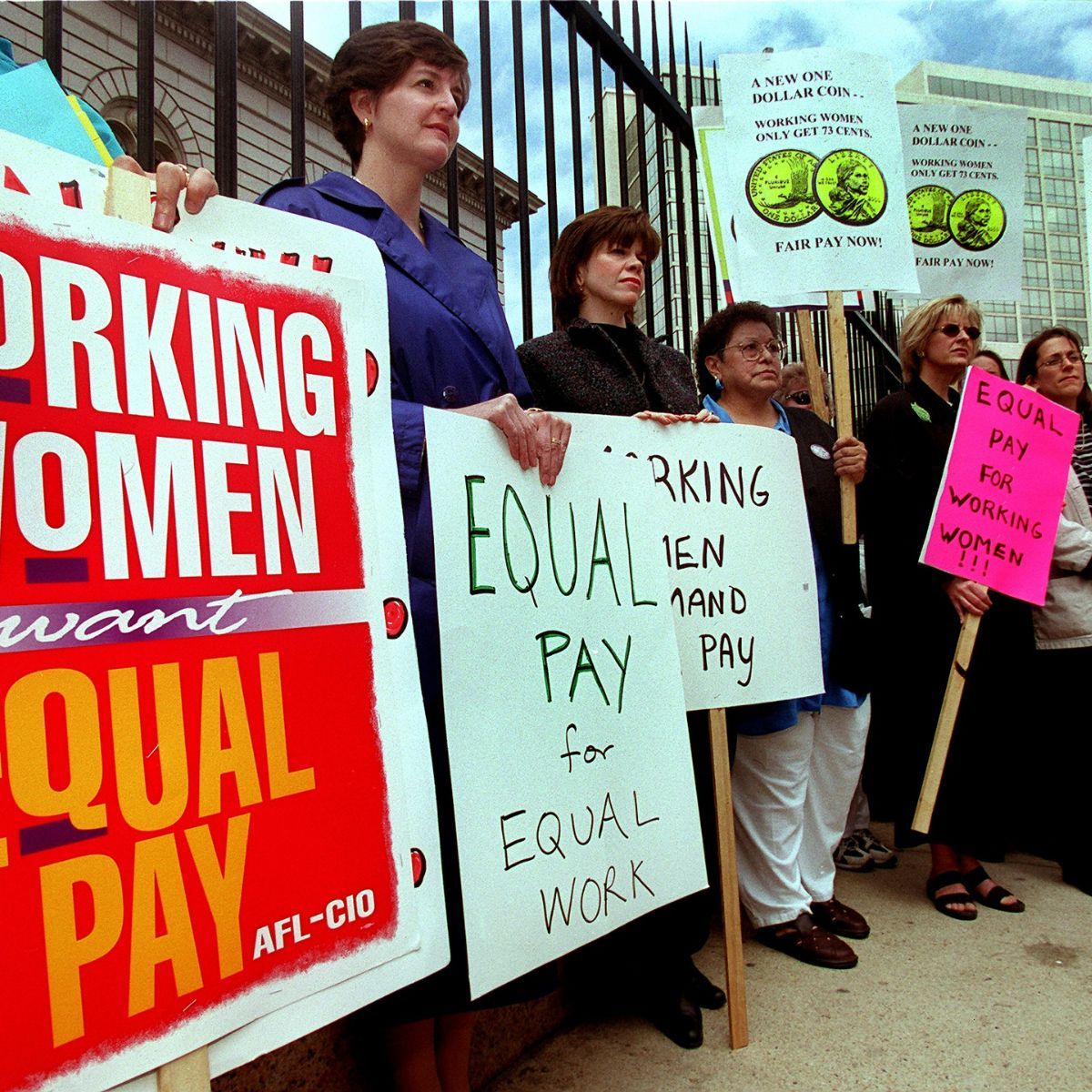
I don’t know if it’s just me, but when talk turns to the gender pay gap, my mind conjures images of Succession-style boardrooms, FTSE 100 execs, and literal glass ceilings. I imagine the fight as one between women and men in power, but new research suggests this narrative could be doing more harm than good – especially for women in low-income households.
According to a new study published in the Cambridge Journal of Economics, the gender pay gap is far more complex than women being underrepresented at the top. In fact, the pay gap is widest in wealthy households, where women earn, on average, 25% less than their male partners. In poorer households, the gap is 4%.
Lead author Dr Vanessa Gash, from City St George’s, University of London, says the issue is being oversimplified: “Policymakers’ efforts to close the gender pay gap need to be more strongly tied to an agenda of good quality employment for all.”
Focusing solely on putting women on boards and into elite leadership roles risks alienating those who aren’t in those spaces to begin with. In our already volatile political climate, this could backfire. As Gash warns: “In the context of rising political populism, there is a risk that politicians could pit the losses of lower-earning men against the gains of higher-earning women.”
In wealthy households, women earn, on average, 25% less than their male partners.
The new analysis used four decades of UK work-history data, and the findings clearly show that class matters enormously in the gender pay gap. In low-income households, both men and women are often trapped in low-paid, insecure work, which naturally limits the size of the gender gap. Of course, this narrowed gender pay gap is not something to be heralded – it’s simply a mutual disadvantage, with both sexes losing out.

“Calls for pay equity, which focus on the lack of women in high-powered positions, risk alienating those in households where both partners earn similarly low wages,” adds Dr Gash.
Meanwhile, in high-income households, men still dominate in high-earning roles, and women—despite similar education or experience—fall behind. That’s before we even get to the decades-long impact of motherhood penalties, part-time work, or career breaks, which are often necessitated by caretaking responsibilities.
More worrying still is that the data shows part-time work, which is too often the only option for parents facing extortionate childcare costs, has the same negative impact on wages as long-term illness or unemployment. For every year a woman spends in part-time work, her pay is reduced by 3% per hour.

At the heart of this lies the uncomfortable truth that women still do the lion’s share of unpaid care work, and are penalised for it.
From raising children, looking after elderly parents, or running households, this invisible labour continues to fall disproportionately on women’s shoulders and data shows it has a measurable economic cost. In fact, the time women spend outside of traditional full-time work accounts for nearly 30% of the gender pay gap.
Meanwhile, men continue to work full-time, uninterrupted, reaping the compound benefits of consistent employment and steady pay growth. When men do opt for part-time roles, they face steeper wage penalties, which only reinforces the idea that care work is women’s work.
“Key to the problem is the age-old question of who is doing most of the unpaid care work in the home, which our research confirms continues to be women,” argues Dr Gash.
The time women spend outside of traditional full-time work accounts for nearly 30% of the gender pay gap.
Men are rewarded for working, while women are penalised for caring.
Even when all other factors are accounted for—education, job type, full- or part-time status—women still earn less.
According to the research, removing this gender penalty could boost women’s wages by 43% on average. In poorer households, this accounts for a staggering 207% of the gender pay gap.
This research should be a wake-up call. If we’re serious about closing the gender pay gap, it needs to stop being treated as a problem for women at the top to solve alone. Focusing only on boardroom parity while ignoring poor wages and unpaid care misses the point, and keeps those most at a disadvantage down.
Dr Gash puts it best: “Calls for pay equity, which focus on the lack of women in high-powered positions, risk alienating those in households where both partners earn similarly low wages.”
For the gender pay gap to truly close, we need to recognise that class and gender are inseparable in this conversation. There also need to at last be an acknowledgement of care work as what it is: work.







